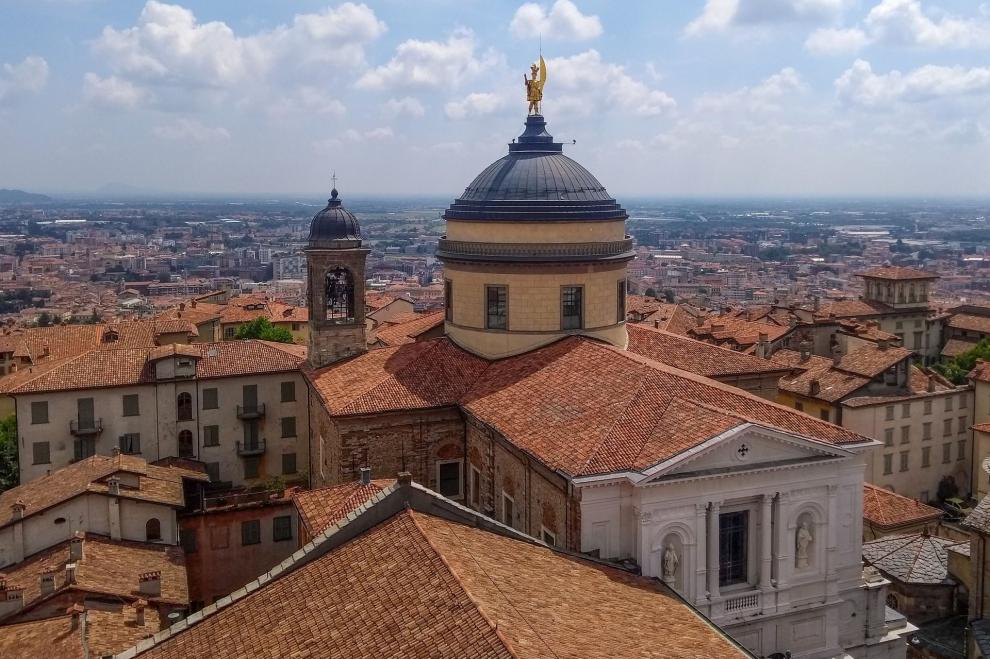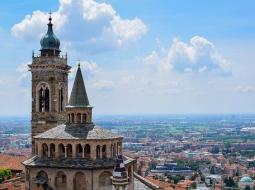Thessaloniki gets ready for its metro launch in November
The underground rapid transit lines have been under construction for almost two decades due to various project delays
 TheMayor.EU logo
TheMayor.EU logo 
Since the 6th century Bergamo has been the seat of one of the most important Lombard duchies in northern Italy, together with Trento, Brescia and Cividale dei Friuli.
From the 11th century onwards, Bergamo was an independent commune, taking part in the Lombard League which in 1165 defeated Frederick I Barbarossa.
After a short period under the rule of the House of Malatesta, Bergamo was ceded in 1428 by the Duchy of Milan to the Republic of Venice in the context of the Wars in Lombardy and the aftermath of the 1427 Battle of Maclodio.
The uneasy balance of power between the Northern Italian states precipitated the Italian Wars, a series of conflicts from 1494 to 1559 that involved, in different time, also the Papal States, France and the Holy Roman Empire. The wars, which were both a result and cause of Venetian involvement in the power politics of mainland Italy, prompted Venice to assert its direct rule over its mainland domains.
On 17 October 1797 the Treaty of Campo Formio formally recognized the inclusion of Bergamo and other parts of Northern Italy into the Cisalpine Republic.
In 1815 the Congress of Vienna assigned Bergamo to the Kingdom of Lombardy-Venetia, a crown land of the Austrian Empire. The visit of Emperor Ferdinand I in 1838 coincided with the opening of the new boulevard, leading to the railway station that was inaugurated in 1857.
In 1859 Giuseppe Garibaldi conquered Bergamo, during the Second Italian War of Independence. As a consequence the city became part of the newly-proclaimed Kingdom of Italy founded in 1861.
Due to its contribution to the Italian unification movement, Bergamo was named La Città dei Mille (City of the Thousand), due to the city's support for Giuseppe Garibaldi in his 1860 Expedition of the Thousand against the Kingdom of the Two Sicilies. During the 20th century, Bergamo became one of Italy's most industrialized areas.
Source: Wikipedia
The city of Bergamo is located in the alpine Lombardy region of northern Italy, approximately 40 km northeast of Milan, and 30 km from the alpine lakes Como and Iseo. The Bergamo Alps begin immediately north of the city.
The population of around 120,000, makes Bergamo the fourth-largest city in Lombardy. Bergamo is the seat of the Province of Bergamo. The metropolitan area of Bergamo extends beyond the administrative city limits, spanning over a densely urbanized area with around 500,000 inhabitants. The Bergamo metropolitan area is part of the broader Milan metropolitan area, home to more than 8 million people.
Source: Wikipedia
Bergamo is located in Lombardy, where about a quarter of the GDP of Italy is produced. Bergamo has an advanced tertiary economy focussed on banking, retail, and services associated to the industrial sector of its province. Bergamo produces also a variety of world famous wines.

It is located in the splendid setting of Bergamo's upper city, on piazza del Duomo, between the city's dense network of streets. Built in the 12th century, the basilica has a typically Romanesque exterior, while the interior décor is reminiscent of the brilliant Baroque style.
The citizens of Bergamo commissioned the construction of the basilica as a votive offering to the Virgin Mary, hoping that she would bring a long period of drought to an end. While the basilica was completed in the 13th century, work continued there all the way up to the 18th century.
Source: in-lombardia.it

Venetian Walls of Bergamo are a UNESCO World Heritage Site from 2017. They extend for over 6 kilometers, with a varying height. Over the weekend, the perimeter becomes a large pedestrian area.
The upper city of Bergamo is enclosed by this imposing masonry examples and bastions that date back to the XVI century when Bergamo was part of the Venetian Republic. The red light of the street lamps descends upon this impressive structure while a vast panorama of the lower city can be gazed upon from above.
Source: in-lombardia.it
Address: Matteotti Square №27, 24122 Bergamo